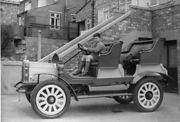 Hartlepool Sports & Leisure
Hartlepool Sports & Leisure
- Cinemas, Theatres & Dance Halls
- Musicians & Bands
- At the Seaside
- Parks & Gardens
- Caravans & Camping
- Sport
 Hartlepool Transport
Hartlepool Transport
- Airfields & Aircraft
- Railways
- Buses & Commercial Vehicles
- Cars & Motorbikes
- The Ferry
- Horse drawn vehicles
 A Potted History Of Hartlepool
A Potted History Of Hartlepool
- Unidentified images
- Sources of information
- Archaeology & Ancient History
- Local Government
- Printed Notices & Papers
- Aerial Photographs
- Events, Visitors & VIPs
 Hartlepool Trade & Industry
Hartlepool Trade & Industry
- Trade Fairs
- Local businesses
- Iron & Steel
- Shops & Shopping
- Fishing industry
- Farming & Rural Landscape
- Pubs, Clubs & Hotels
 Hartlepool Health & Education
Hartlepool Health & Education
- Schools & Colleges
- Hospitals & Workhouses
- Public Health & Utilities
- Ambulance Service
- Police Services
- Fire Services
 Hartlepool People
Hartlepool People
 Hartlepool Places
Hartlepool Places
 Hartlepool at War
Hartlepool at War
 Hartlepool Ships & Shipping
Hartlepool Ships & Shipping

Shew motor car reg. no. BR 211
Beamish Museum has recently acquired a unique motor vehicle, the SHEW, which is on display in the Museum garage. The Friends contributed £3000 towards its purchase. But thats what Friends are for.
The unique feature of this vehicle is the chassis frame that pivoted in the middle to provide four-wheel steering.This method of steering was the invention of Thomas Hugh Parker of Wolverhampton in 1905-1906, who was responsible for the design of a number of electric, steam, and petrol-driven vehicles from 1897.
It is believed that the surviving SHEW, with 14hp twin cylinder Forman engine, was the second of two prototypes with articulating chassis, designed by Mr Parker, and constructed at the Burnt Tree Engineering Works, Dudley, in 1906-1907.
The first prototype had a four cylinder White and Poppe engine, and ran for eight months as a taxicab on the streets of London. The success of this vehicle led to the formation of The Sedan Auto-Car Syndicate Limited, Lichfield Street, Wolverhampton, in October 1907, to market this vehicle both as a car and a commercial.
About this time, The Marquis of Londonderry's Seaham Harbour Engine Works had ceased the manufacture of Londonderry Steam Waggons and expressed an interest in the Parker vehicle.
Hence, the prototype SHEW was despatched to Seaham Harbour Engine Works by rail, and agreement was reached that they would commence manufacture of this vehicle on behalf of the Sedan Auto-Car Syndicate.
The enterprise failed after only three vehicles had been produced, including a lorry for The Coalite Company.
The SHEW car was retained by the Seaham Works as a runabout, and about 1912 was extensively rebuilt: the articulating chassis steering was discarded and conventional Ackermann steering fitted.
After the First World War the SHEW was relegated to carrying out duties on The Marquis of Londonderry's Estate at Wynyard Park, and was finally pensioned off before the Second World War.
In 1956, as a result of a "tip-off" from Veteran car enthusiast Fred Baxter of Harrogate, George Kendrew discovered the mystery SHEW in one of the outbuildings on The Marquis of Londonderry's Estate, and towed the vehicle to his home in Norton-on-Tees behind his Armstrong Siddeley car,
Mr Kendrew surmised that the initial letters SHEW on the plate fixed to the radiator probably stood for Seaham Harbour Engine Works.
He replaced the solid-tyred wheel rims with beaded edge rims to take pneumatic tyres, and rebuilt the remains of the four seater touring body as a four seater double phaeton to be consistent with a claimed 1904 date.
The dating was provisionally accepted by the Veteran Car Club of Great Britain, which enabled Mr Kendrew to participate in the 1957 The Veteran Car Club was never able to find a single contemporary piece of evidence to show that Seaham Harbour Engine Works produced a petrol-driven vehicle.
However they found good reason to believe that it could not have been made as early as 1904. On the chassis frame was found the trademark of Rubery, Owen and Company, and it was established that this firm was simply Rubery and Company until about October 1905.
The 1906 type Forman engine, and the fact that the Registration Mark BR 211 was issued about May 1906, eventually led research historian Dennis Field to date the car 1906.
Mr Kendrew sold the SHEW to a Garage in Mirfield, near Leeds, in the 1960s, and in 1967 the car was sold at Auction to a private collector in the south of England. The car's whereabouts were unknown until it surfaced in a Cheffins Auction in June 2003.
The name SEDAN is cast into the brass hubcaps of the SHEW, and as The Sedan Auto-Car Syndicate was not established until October 1907, the year of manufacture of the surviving car is most likely 1907.
Related items :
 Testing it out
Testing it out
 Donated by Hartlepool Library Service
Donated by Hartlepool Library ServiceA young boy sitting at the wheel of a Shew Motor car reg no BR 211. The SHEW rediscovered after years in storage at Wynyard Hall and before ‘restoration’. Note the solid tyres, flatbed back and striped colour scheme on the seat sides. Now in possession of Beamish museum.
HHT&N 670
More detail »



